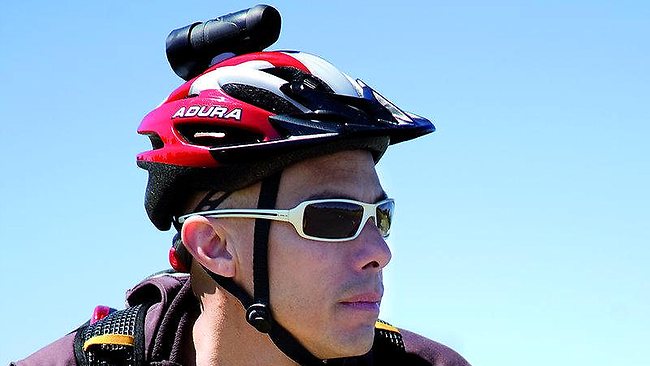

Exclusively for Sotheby’s Dutch designer Herman van Hulsteijn created a very special edition of 9 extraordinary Vanhulsteijn bicycles covered in a dazzling coat of Japanese urushi lacquer and gold leaf.
The curve is the single most distinguishing feature of this bicycle, stretching from the saddle toward the handlebars in front and terminating at the rear wheel at the back. It appears as if the rider is floating in mid-air. This particular bike design grew out of Hermans need to create ‘a good looking cycle’: a head-turner that is designed for fast, comfortable rides. At first he build a prototype just to himself, but as soon as he started riding around the city everybody wanted one.
After selling a first batch of bikes, printed press and bloggers also noticed the innovative look of the Vanhulsteijn bicycle. This jump-started the development of the bike and allowed Herman to open the Vanhulsteijn shop and broaden his international clientele. Today the Vanhulsteijn bicycles are still handcrafted completely out of stainless steel in the middle of Arnhems working-class quarters by a small team of craftsmen using the latest techniques and a wide variety of high quality parts.
For this occasion Vanhulsteijn teams up with two Russian artisans who specialize in Japanese lacquer techniques called urushi. This particular style of lacquer, Tsugaru Nuri implements several layers of gold leaf to achieve a stunning, rich effect that contrasts beautifully with the industrial parts of the bike. The layer of precious metal glows underneath the lacquer and creates an enormous feeling of depth whereby the pattern almost appears to be three dimensional. A pleasant side effect of this ancient Japanese technique is that every bike will have a naturally unique pattern.
Needless to say all the bikes are fitted with the highest quality components available today which are listed below. Beside the frame, Herman van Hulsteijn designed the signature parts like the elegantly shaped brake levers and pedals himself. Every single part that has no lacquer on it was carefully polished by hand to highlight their shape. The ray-skin upholstery of the saddle and handle bar tops off the luxury look of the bike. Ultimately the bicycle is finished off with the Vanhulsteijn logo’s and number in the Maki-e technique: different grain sizes of gold dust sprinkled in urushi lacquer.
Urushi is the sap of the urushi or lacquer tree (rhus vernicifera). It is a member of the sumac family (anacardiaceae) and native to China, Korea, Japan and the eastern Himalayas. The sap of this tree contains a resin (urushiol) which, when exposed to moisture and air, polymerizes and becomes a very hard, durable, plastic-like substance. Urushi is in fact a natural plastic. The process of applying the lacquer is long and labour intensive: independent of the size of the surface it takes on average 6 months to carry out the finishing. In some cases 60 layers are applied and polished by hand. Depending on the kind of lacquer the time it takes a single layer to dry can take from 2 hours up to 3 months. Due to its fascinating characteristics which are both sustainable and esthetically beautiful, urushi is still used for a wide variety of purposes.
From its first use in the making of bowls, plates, trays, sake cups, boxes, combs and other objects, the use of urushi developed along with Japanese culture. In Japan the urushi bowl or plate became a part of the harmony of traditional Japanese food. In the noble court culture classical styles took form. Maki-e and raden urushi techniques elegantly used gold and silver to ennoble furniture, make up accessories, toys and writing implements. Urushi also became an integral part of the harmony of Natsume (tea canisters), Kogou (incense burners) and other tools and utensils used in the tea ceremony. In the Edo period people adorned themselves with urushi medicine cases, combs and hairpins. Many of these objects can be found in museums and private collections today.
In the 20th century a number of designers working in France began to use Asian lacquer for furniture and other decorative arts. Eileen Gray and Jean Dunand are two of the artists who produced screens, furniture and paintings using Asian lacquer. Today, while many craftspeople still make beautiful lacquer ware, urushi has become an important material in the art scene in Japan and other parts of Asia. Contemporary artists are increasingly working with urushi, its colors, shapes and techniques in their paintings, art objects and jewelry.
This combination of contemporary design and traditional craft is made to order and tailor made to Sotheby’s clients in a limited edition of 9 bicycles. For further inquiries contact us at info@]vanhulsteijn.com.

